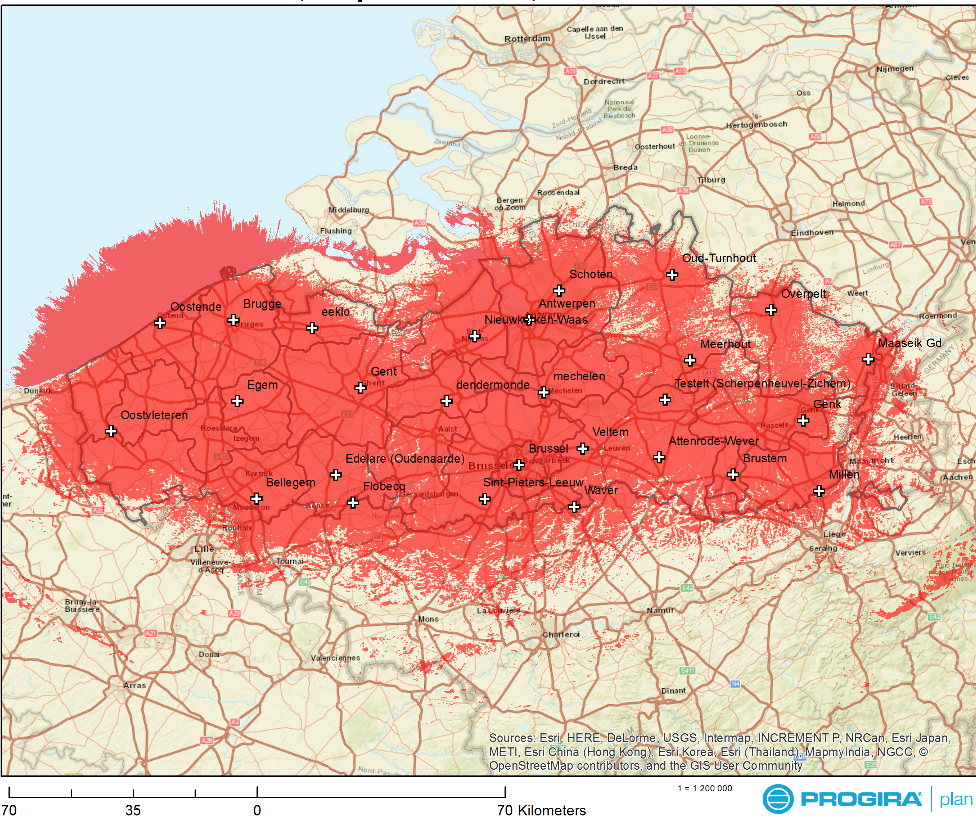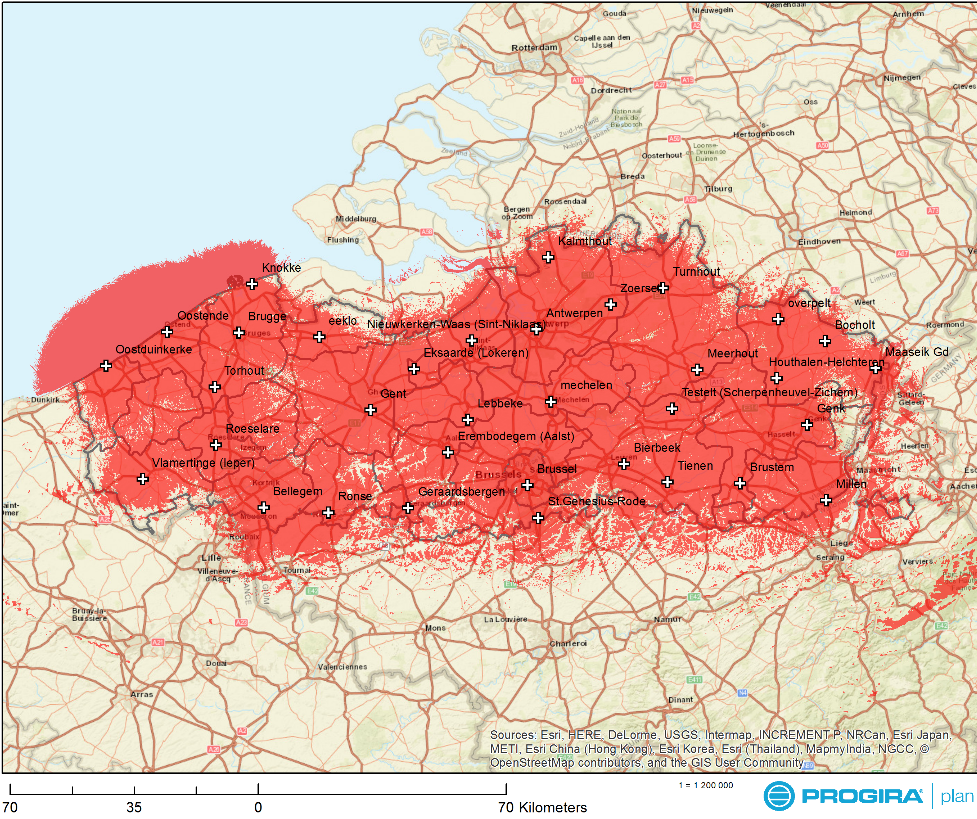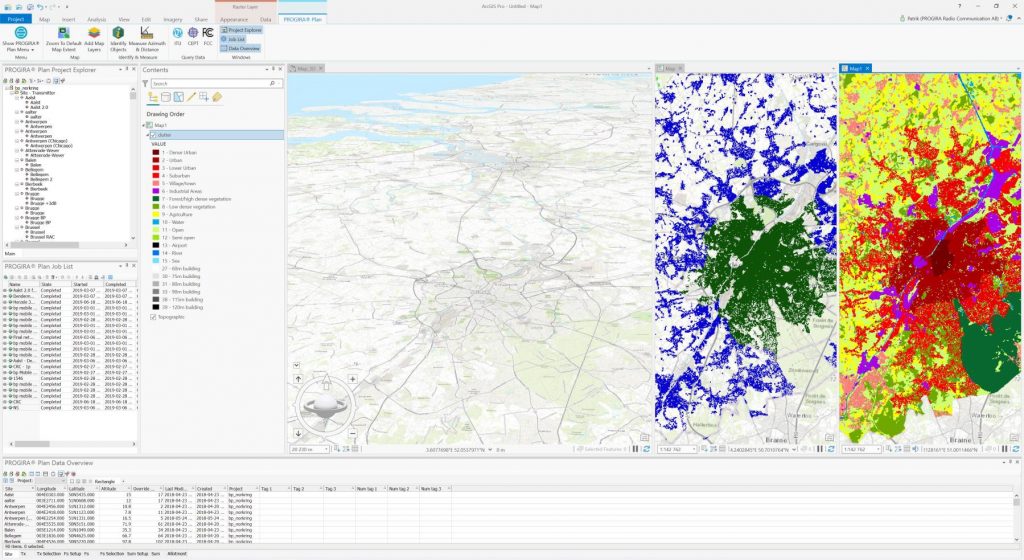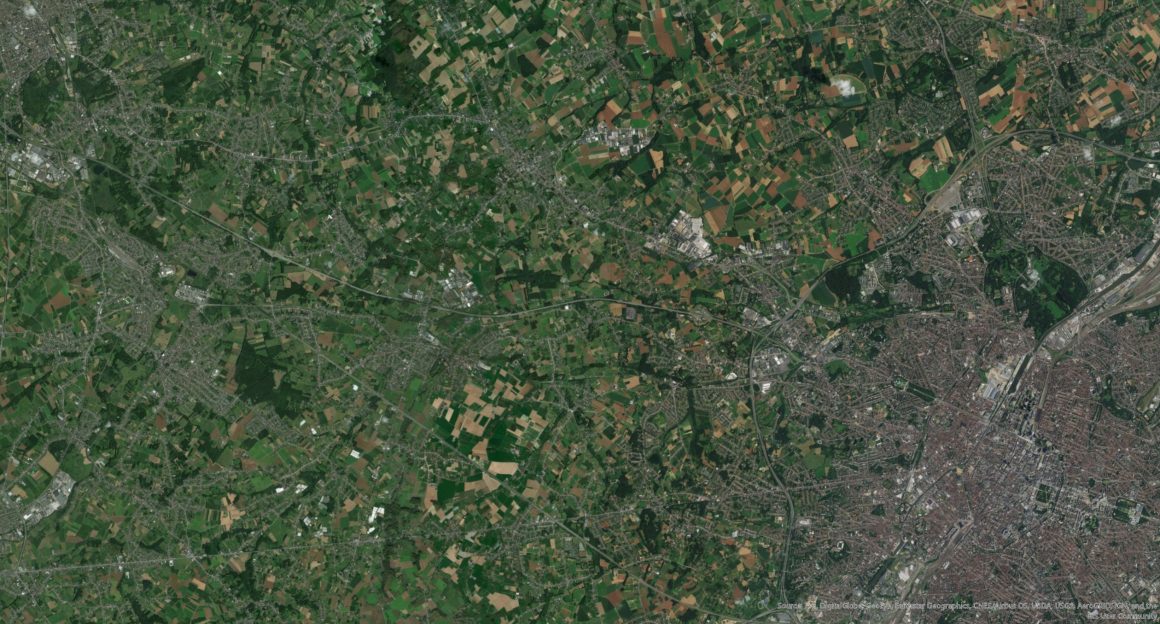Transitioning a T-DAB Network from HPHT to LPLT Infrastructure – A Case Study
Background:
Vlaamse Radio- en Televisieomroeporganisatie (VRT) is a publicly-funded, radio and television broadcaster for the Flemish regions of Belgium. Besides transmitting television channels, VRT broadcasts radio channels in both analog and digital formats. They are the market leaders in radio broadcasting within Belgium, boasting a market share of an estimated 65%. With an operation of 5 radio networks, comprising of 5 FM programs and 12 T-DAB on one mux, VRT targets a population of up to 7 million listeners.
The Challenge:
Built-in antennas in radios has been a norm for a while. Radio broadcasters expect listeners of their programs to be tuning in to their services anywhere. They can be listening to radio programs from the indoor, outdoor or when they are on-the-move. Undoubtedly, broadcasters must maintain an exceptional quality of indoor, outdoor as well as mobile reception; to offer clients high quality services. The traditional broadcast network uses high power transmissions from high towers and masts to deliver their services. It is a network architecture, also known as high power high tower (HPHT). Mobile services, on the other hand, utilizes a low power low tower (LPLT) topology. Some argued that HPHT is optimized for the reception of outdoor antennas, but no some much for indoor antennas. Conversely, a low power low tower (LPLT) topology may potentially offer a more uniform indoor reception. Perhaps the more compelling reason to transition from a HPHT network architecture to one of LPLT is having a converged platform with mobile services and advantages that comes with it. VRT was considering a potential transition from HPHT to LPLT in response to the fast-evolving market dynamics. To make data-driven, informed choices, VRT needed
- An in-depth investigation of their networks’ performance
- The best strategy to extend their networks’ coverage, and improving indoor, and mobile reception at the same time
- Develop cost-effective strategy to transition from HPHT to LPLT
The Approach:
While it may be evident to some, that increasing the number of sites is a sure-fire to achieve better indoor reception and network coverage; it is also a sure-fire strategy to increase the costs of the networks unreservedly. The key of our approach was to find the most cost-effective solution to extend the network and achieve VRT’s targets. To achieve that, we needed to conduct a comparative analysis between networks utilising the HPHT and LPLT architecture. We aimed to empower VRT to make informed choices of their network architecture and design. There were 3 phases to this study.
Phase 1: In-depth investigation of the existing DAB network.
We performed a SWOT analysis of the current T-DAB network, which utilized the HPHT infrastructure. Further, we provided VRT with the population and coverage figures and plots for outdoor, indoor, and deep indoor reception. Subsequently, we created coverage plots for VRT’s entire network and of each individual transmitter. Besides, we also presented the interference contours of VRT’s entire network. Based on these results, we then determined the coverage requirements for VRT’s future network.
Phase 2: Extension of existing DAB network with HPHT infrastructure
At this stage, we established the requirements from the current DAB network with an HPHT network architecture to achieve the coverage goals set in Phase 1. VRT offered information on sites (such as the position, mast height, and their owner) which are available to extend their existing network. To select suitable sites to expand the network, we created population coverage data and plots for each possible, additional site. We also conducted simulations to present population coverage for the potential network as a whole. In collaboration with VRT, we selected the addition of an optimal number of sites to achieve the coverage requirements.

Phase 3: DAB network implementation on LPLT infrastructure
We designed a new network using the telecom infrastructure as a basis. Similar to Phase 2, VRT provided information on sites available in the telecom infrastructure for the potential transition. We conducted simulations and provided VRT with population coverage figures, area coverage figures, and coverage plots of total network and each additional transmitter. The interference contours of the complete system were also demonstrated.

Technicalities
We took extra measures to ensure our analysis and simulations were performed accurately with PROGIRA plan – our module-based, radio-frequency network planning software.
CRC-Predict, developed by the Communication Research Centre in Canada, was selected as the radio wave propagation model. It is a deterministic model which accounts for terrain and calculates diffraction along path profiles along the radial of a transmitter. CRC-Predict is particularly useful for detailed system planning and dimensioning. It is a well-validated propagation model which have been implemented within PROGIRA plan since its conception.
Tuning the propagation model
To further enhance the accuracy of the predictions within VRT’s context, we fine-tuned the propagation model based on VRT’s knowledge of the actual coverage from field-strength measurements and known weak spots.
Determining planning parameters
We employed an iterative process to define the planning parameters for mobile, indoor and deep indoor coverages. Firstly, we pre-defined the T-DAB planning parameters based on UK and DNK values, adhering closely to DAB+ planning guidelines developed by EBU and ITU. The final planning parameters were eventually established from results we obtained from Phase 1 (using the predefined parameters), VRT’s field measurements, and adjusted propagation model. Some of the planning parameters were below.
- Areas to cover –cities, roads, postal code areas
- Population coverage targets
- The quality provided (% location)
- Building penetration loss (BPL) values for indoor coverage
- Receiver characteristics, such as
- Antenna gain
- C/N
- Synchronization
- End of guard interval model
- Local/regional networks –Will have an impact on the network structure
- Frequencies to be used
- Coordination limitations

Results
VRT’s existing network had a mobile coverage of 99.6%. An estimated 87.5% of the population had indoor coverage. Based on these results, VRT aimed to design a network that increases mobile coverage to 99.9%. They wanted 95% of their population to be able to receive their services indoor. If VRT were to utilize the HPHT network architecture, it would need to build three more sites to achieve their targets for mobile coverage. A total of 7 additional sites were required, such that 95% of the population can be reached indoors. Conversely, if LPLT sites were utilized for a network extension, VRT would require seven additional sites to provide mobile reception to 99.9% of the population. Fourteen other sites were needed to provide indoor reception to 95% of the community.
Impact
With the data presented, VRT was able to uncover the weaknesses in their networks. They were able to develop the best strategy to extend their service areas, mitigate the gaps of their coverage and transition their network architecture in the most cost-effective way possible.
TESTIMONIAL

“Our main goals for the DAB planning project was an in depth analysis of the former VRT DAB network coverage and redesign of a new network future proof topology, coping with the evolving influence of contemporary construction principles. Cooperation with PROGIRA is a swift process, they deliver added value by own insights based upon wide experiences with other broadcast design projects”
Senne Van Loon
Projectleider Distributie
Audiotechnologie
To request a copy of the DAB planning Guidelines
Let’s Talk
Ready to extend your network coverage? Contact us by clicking below.

